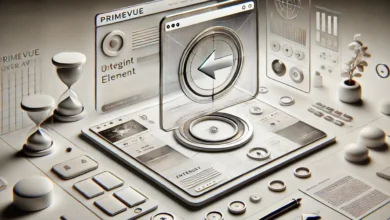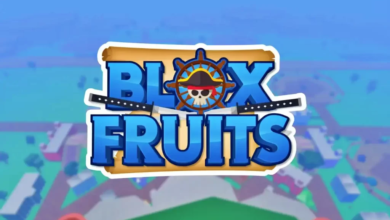GIFs have become a staple of digital communication, social media engagement, and even branding. Their ability to loop endlessly and convey emotion or humor in a compact format makes them ideal for quick consumption. However, there are significant limitations to GIFs in terms of performance, compatibility, and file size. That’s where the conversion of GIF to MP4 becomes a game-changer.
This comprehensive guide will explore why converting GIFs to MP4 is essential, how to do it effectively, and what benefits you gain from making this simple yet impactful change.
Why Convert GIFs to MP4?
1. File Size Efficiency
One of the most compelling reasons to convert GIFs to MP4 is the reduction in file size. GIFs are not compressed efficiently compared to modern video formats. As a result, even a short GIF can be several megabytes large. An MP4 version of the same visual can be up to 10 times smaller in size. This drastically reduces load times and saves bandwidth, making it perfect for web developers and digital marketers aiming for speed optimization.
2. Enhanced Quality
GIFs are limited to 256 colors, which can result in poor visual quality—especially for videos or animations with gradients and detailed visuals. MP4, on the other hand, supports millions of colors and offers much smoother playback and crisper visuals, elevating the viewing experience.
3. Improved Compatibility
Modern platforms and browsers are increasingly favoring MP4 over GIFs. While GIFs can still be displayed universally, MP4s offer better support for mobile responsiveness, full-screen display, and customization options like volume control, playback speed, and subtitles.
4. SEO and Accessibility
Search engines can’t index the content inside a GIF. However, an MP4 video can be accompanied by metadata, transcripts, and captions—making it more SEO-friendly and accessible to a broader audience, including those with hearing impairments.
Popular Use Cases for Converting GIFs to MP4
1. Social Media Marketing
Platforms like Instagram, Facebook, and Twitter perform better with MP4 videos. These platforms prioritize video content in user feeds, which means that your converted MP4 content is more likely to be seen and engaged with than a traditional GIF.
2. Website Optimization
Replacing heavy GIFs with lightweight MP4s can significantly speed up your website. Faster load times improve user experience and contribute positively to SEO rankings.
3. Email Campaigns
Many email clients struggle to display GIFs correctly. By converting them to MP4, you ensure higher compatibility and more dynamic content delivery in newsletters and email promotions.
4. Presentation Enhancement
Using MP4 videos in presentations instead of GIFs allows for more polished transitions and compatibility across platforms like PowerPoint and Keynote.
Step-by-Step: How to Convert GIF to MP4
Converting a GIF to MP4 can be quick and painless using the right tools. One of the easiest and most efficient methods is to use an online converter like Adobe Express.
Step 1: Upload Your GIF
Visit the Adobe Express converter page. Click on “Upload your file” and select the GIF from your device. The platform supports drag-and-drop functionality for ease of use.
Step 2: Choose Output Format
Make sure MP4 is selected as the desired output format. Adobe Express automatically optimizes for best results in terms of size and quality.
Step 3: Customize (Optional)
You can trim the video, resize it for different platforms (like Instagram or YouTube), or mute background sounds. These options allow for enhanced customization to fit your needs.
Step 4: Download and Share
Click “Download” to save your new MP4 file. You can now share it on any platform, embed it in a website, or use it in professional content creation.
Comparing Popular Tools: Online and Offline
Adobe Express
- Pros: User-friendly, no software installation required, free with premium options, cloud-based.
- Cons: Requires internet access.
HandBrake
- Pros: Free and open-source, powerful features.
- Cons: Slight learning curve, requires download and installation.
VLC Media Player
- Pros: Multi-functional media player, conversion tool built-in.
- Cons: Not as intuitive, limited customization options.
EZGIF
- Pros: Straightforward and fast.
- Cons: Limited editing capabilities, ads on the site.
Adobe Express stands out due to its intuitive design and professional-grade results, ideal for users at all levels.
Tips for Optimizing MP4 Files Post-Conversion
1. Compress Without Losing Quality
Even though MP4 is efficient, large files can still be an issue for slow internet connections. Use tools like HandBrake or online compressors to reduce size while maintaining clarity.
2. Add Captions or Subtitles
This improves accessibility and engagement, especially on social media where many users watch videos without sound.
3. Ensure Proper Aspect Ratios
Different platforms prefer different video dimensions. For instance, Instagram Stories favor a 9:16 ratio, while YouTube works best with 16:9. Resize accordingly for best visibility.
4. Enable Autoplay (Where Applicable)
Embedding your MP4 with autoplay can mimic the looping behavior of a GIF, providing a similar experience with better performance.
Frequently Asked Questions
Q1: Will I lose quality when converting?
No, in fact, you’ll likely gain visual clarity. MP4 supports higher color ranges and frame rates than GIFs.
Q2: Can I convert back to GIF from MP4?
Yes, though it’s not generally recommended due to potential quality loss. If you need to, tools like EZGIF can reverse the process.
Q3: Is it legal to convert GIFs to MP4?
Yes, as long as you own the content or have permission to use and modify it.
Q4: Do MP4s support transparency like GIFs?
Not natively. If you need transparent backgrounds, formats like WebM or animated PNG (APNG) may be better options.
The Future of GIFs and MP4s
As web technologies advance, we are likely to see a decline in traditional GIF usage. MP4 and other modern formats offer the flexibility, performance, and compatibility that today’s digital landscape demands.
Platforms like Adobe Express are leading the way by making high-quality video conversion tools accessible to everyone—from casual users to professional designers. As we move toward more visual, video-driven content, knowing how to convert and optimize your files will give you a competitive edge in both personal and professional settings.
Conclusion
While GIFs may have a nostalgic and humorous appeal, they’re not always practical in today’s fast-paced, high-resolution digital world. Converting GIF to MP4 offers numerous advantages—from improved quality and reduced file size to broader compatibility and better SEO performance.
Whether you’re a content creator, web developer, or marketer, mastering this simple transformation can dramatically enhance your digital output. So next time you find yourself dealing with a bulky GIF, consider switching to MP4 and experience the benefits for yourself.




